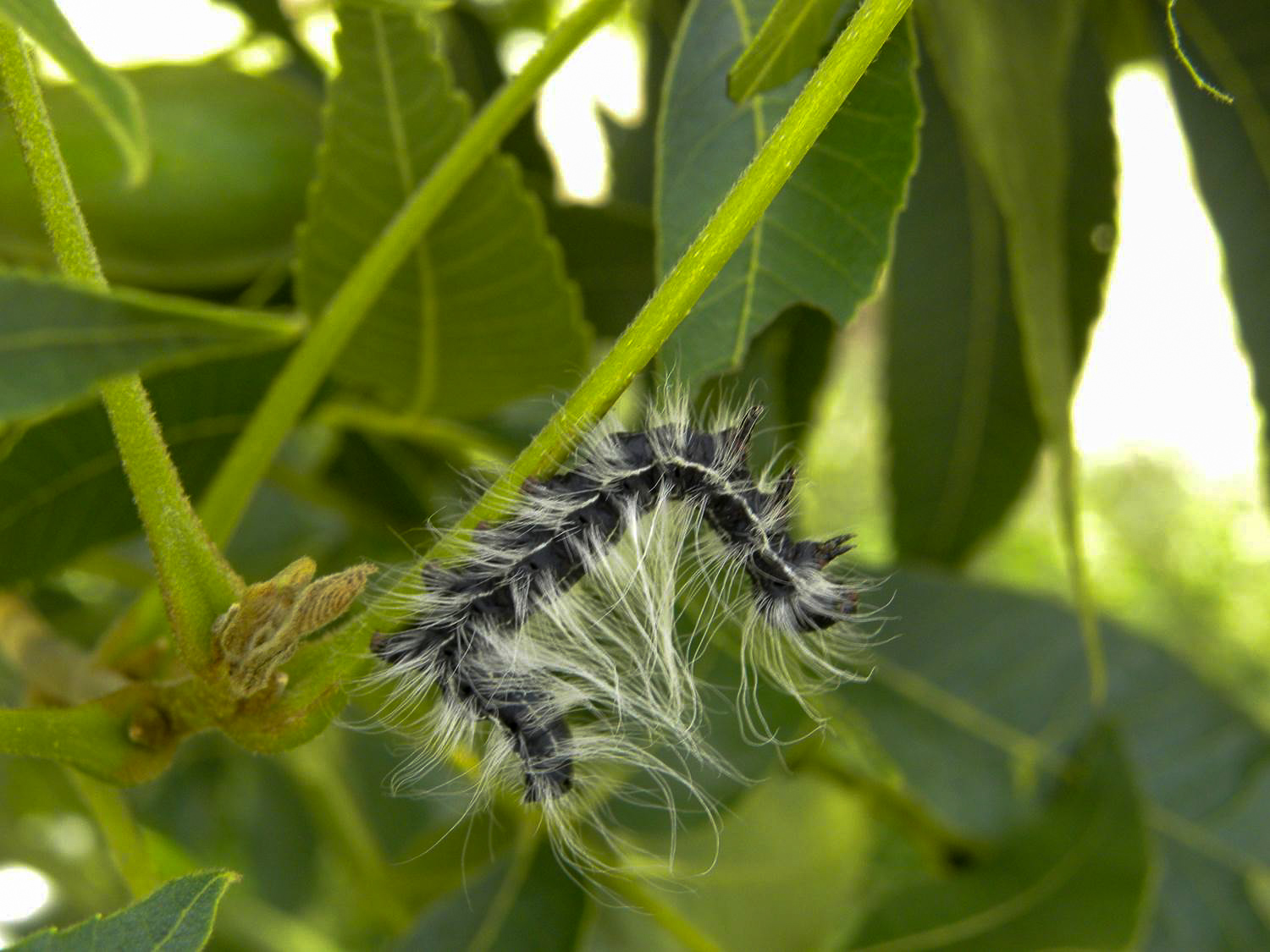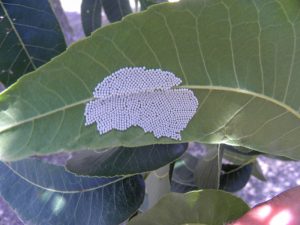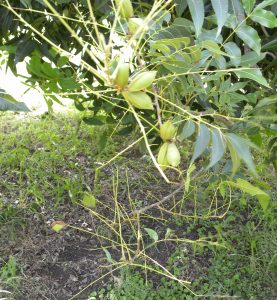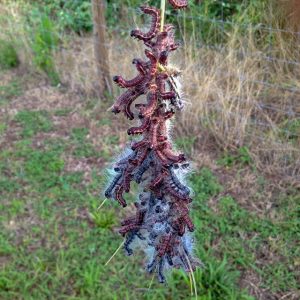Walnut Caterpillar: Early detection is the key to prevent economic loss

Walnut caterpillar fifth instar. (Photo courtesy of Bill Ree)
Walnut caterpillar’s appearance in an orchard is more sporadic from year to year, but if it does occur in a sufficient number and goes uncheck it can have a tremendous impact on a crop.

Female moths deposit egg mases on the undersides of individual leaflets. This is the start of an infestation. (Photo by Bill Ree)
The walnut caterpillar is a foliage feeder of trees in the Juglandaceae family, which includes hickories and walnuts. Here in Texas, this insect can have two or three generations a year based on developmental times with 245 frost-free days being an approximate dividing line between areas that could have two or three generations. Walnut caterpillars need mature foliage for development so the first generation may not appear until mid-May or early June.
Infestations start when female moths deposit egg masses, which may contain 300 to 900 plus eggs, on the undersides of individual leaflets of mature foliage. It is believed that a single female will deposit only one egg mass in her life. Unlike fall webworm, where egg masses can be deposited in layers and will be covered with “fuzz,” walnut caterpillar egg masses are in one layer and free of any covering. Eggs take an average of 10 to 12 days to mature, and larval feeding will last approximately 23 days before larvae leave the tree to seek pupation sites. Pupation time will take 14 to 17 days. Upon adult emergence, there is a five-day preoviposition period before the cycle restarts.
Walnut caterpillars feed in a colony and do not construct a web, so initial infestations can be easily overlooked. Early indications of an infestation might be frass, or droppings, on the orchard floor or in town on sidewalks and driveways. Branch terminals with missing foliage but retained leaf rachis are other signs of an active infestation. When the fourth instar molts, the colony molts as a group on the main trunk or a scaffold limb leaving behind a mass of cast skins, and this is another indication that there are active larvae still feeding within the canopy.
The emerging fifth and last instar larvae now feed as individuals. During this last instar, most of the feeding damage occurs. When the last instar finishes feeding, larvae will leave the tree in search of pupation sites.
One primary aspect of the walnut caterpillar life cycle that makes this insect such a potential problem is that almost all of the damage (foliage consumption) occurs in a very short time. Approximately 80 percent of all foliage consumed during the entire larval stage will occur in three to four days during the fifth instar.
During a visit last year to an infestation site in Fort Bend County, one homeowner made a textbook comment on walnut caterpillar: “The trees looked fine when we left for the weekend and when we returned all the trees were completely defoliated.”
In order to prevent this type of loss, producers should be aware of the signs of activity:
- branch terminals with missing foliage
- sclerotized leaflets (caused by the first instar larvae)
- droppings (frass) on the orchard floor, sidewalks, driveways and equipment
- masses of cast skins or larvae in tree trunks or main scaffold limbs.
Although these isolated or localized areas of walnut caterpillar activity happen every year, it has been a long time (early 1970s) since there was a major statewide infestation and we keep wondering if “this” year will be the next major outbreak.

After defoliating the limbs around this nut cluster, walnut caterpillars have moved on. (Photo by Bill Ree)
Because this insect has the potential to go from almost undetectable in one generation to major outbreaks in the next, the importance of monitoring and awareness cannot be overstated.
If an insecticide is required to prevent defoliation, there are numerous, desirable products that are selective for Lepidoptera larvae. The main point here: treatments need to be applied before significant foliage loss occurs. Prior to any insecticide application always check the label for mixing instructions, rates and grazing restrictions.
By understanding the life cycle and feeding signs, and being observant, significant defoliation of commercial or residential trees can be prevented.


